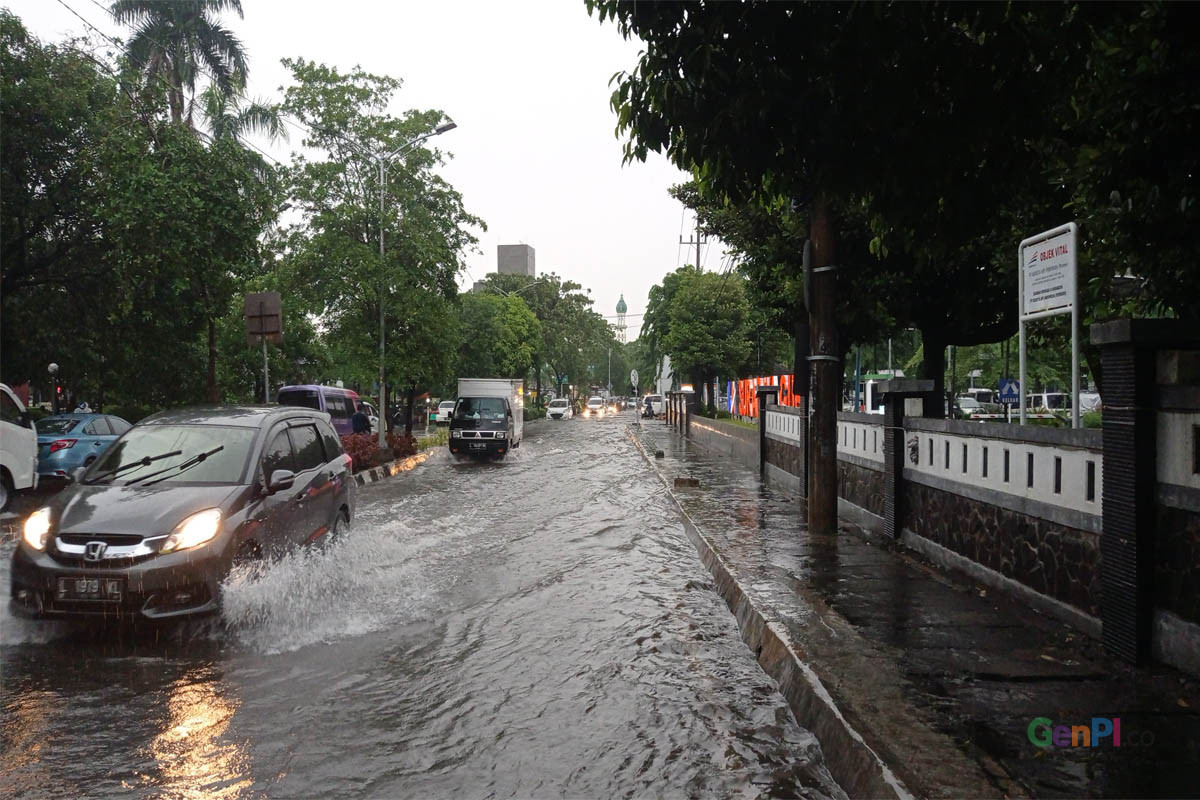Europe's Auto Industry Faces Headwinds Amidst Economic Slowdown

Table of Contents
Weakening Consumer Demand and Reduced Car Sales
The economic slowdown is directly impacting consumer spending, significantly affecting the European car market. Inflation, rising interest rates, and general economic uncertainty are forcing consumers to reconsider large purchases like new vehicles.
Impact of Inflation and Rising Interest Rates
Increased inflation erodes consumer purchasing power, leaving less disposable income for discretionary spending. Simultaneously, higher interest rates make car loans more expensive, increasing monthly repayments and reducing affordability. This combination creates a perfect storm for the automotive sector.
- Decreased disposable income: Inflation eats into household budgets, leaving less money for non-essential items like new cars.
- Higher loan repayments: Increased interest rates make car financing significantly more expensive.
- Postponement of large purchases: Consumers are delaying major purchases like new cars until economic conditions improve.
Data from ACEA (European Automobile Manufacturers' Association) shows a concerning decline in new car registrations across major European markets in the last quarter, highlighting the impact of these economic factors on consumer demand.
Shifting Consumer Preferences towards Used Cars
Facing economic uncertainty, many consumers are turning to the used car market as a more affordable alternative. This trend is driven by both the increased affordability of used vehicles and the growing availability of these vehicles through online marketplaces.
- Increased affordability of used cars: Used cars offer a significantly lower purchase price compared to new vehicles.
- Growing online marketplaces for used car sales: Online platforms have made it easier than ever to find and purchase used cars.
Statistics indicate a substantial rise in used car sales in Europe, further confirming this shift in consumer behavior and emphasizing the pressure on new car sales.
Supply Chain Disruptions and Production Bottlenecks
Beyond weakened consumer demand, Europe's auto industry is grappling with persistent supply chain disruptions and production bottlenecks. These issues are significantly impacting manufacturing output and increasing production costs.
Ongoing Semiconductor Chip Shortage
The global semiconductor chip shortage continues to plague the automotive industry, leading to production delays and increased manufacturing costs. The shortage has particularly affected the production of advanced driver-assistance systems (ADAS) and electric vehicles (EVs).
- Production delays: Manufacturers are forced to halt or slow down production due to lack of essential chips.
- Increased manufacturing costs: The scarcity of chips drives up prices, increasing the cost of production.
- Impact on specific car models: Certain car models relying on specific chips are disproportionately affected.
Several major European automakers have publicly acknowledged the ongoing impact of the chip shortage on their production schedules and financial performance.
Geopolitical Instability and Raw Material Scarcity
Geopolitical instability and the scarcity of raw materials, particularly battery metals essential for EV production, are creating further challenges for the industry. These factors contribute to volatile raw material prices and disrupt supply chains.
- Increased costs of raw materials: Fluctuations in the price of raw materials, like lithium and cobalt, impact manufacturing costs.
- Supply chain disruptions due to geopolitical tensions: Global conflicts and trade disputes disrupt supply chains.
- Alternative sourcing strategies: Manufacturers are exploring alternative sourcing options to mitigate supply risks.
Data reveals significant price fluctuations in key raw materials used in automotive manufacturing, highlighting the vulnerability of the industry to global events.
Government Regulations and the Transition to Electric Vehicles
The European Union's stringent emission standards and the push towards electric vehicles (EVs) present both opportunities and challenges for the auto industry. While the transition to EVs is crucial for environmental sustainability, it also requires significant investment and presents considerable obstacles.
Stringent Emission Standards and their Impact
Stricter emission regulations necessitate substantial investments in new technologies and production processes. This increase in compliance costs puts pressure on manufacturers' profitability and influences their investment strategies.
- Increased costs of compliance: Meeting increasingly stringent emission standards is expensive.
- Investment in electric vehicle (EV) technology: Manufacturers must invest heavily in EV technology and infrastructure.
- Impact on profitability: The high cost of compliance can squeeze profit margins.
The EU's ambitious emission reduction targets for the coming years are driving these changes, forcing automakers to adapt rapidly.
Challenges in the Transition to Electric Vehicles
The widespread adoption of EVs faces several obstacles, including the lack of sufficient charging infrastructure and the high cost of EV batteries. Range anxiety, the fear of running out of battery power, also remains a consumer concern.
- Lack of charging stations: Inadequate charging infrastructure hinders EV adoption.
- High cost of EV batteries: Battery production costs are a major barrier to EV affordability.
- Range anxiety: Concerns about limited driving range on a single charge discourage some consumers.
While EV adoption rates are increasing in Europe, the challenges remain significant, and overcoming these obstacles is crucial for the success of the industry's transition.
Conclusion
Europe's auto industry is facing a confluence of challenges, including weakened consumer demand, supply chain disruptions, and the complexities of transitioning to electric vehicles. The current economic slowdown is significantly exacerbating these pre-existing issues. The outlook requires a cautious but optimistic approach. Manufacturers must adapt to changing consumer preferences, improve supply chain resilience, and accelerate the transition to EVs while addressing the associated challenges. This requires strategic investment, technological innovation, and collaboration across the industry. Stay informed about the evolving landscape of Europe's auto industry and its response to the ongoing economic slowdown by subscribing to our newsletter for updates on European automotive market trends and the challenges facing the European car sector.

Featured Posts
-
 Kho Bau 13 Trieu Usd Cua Hai Tac Rau Den Chuyen Ke Va Hien Thuc
May 28, 2025
Kho Bau 13 Trieu Usd Cua Hai Tac Rau Den Chuyen Ke Va Hien Thuc
May 28, 2025 -
 Resmi Aciklama Cristiano Ronaldo Al Nassr Da
May 28, 2025
Resmi Aciklama Cristiano Ronaldo Al Nassr Da
May 28, 2025 -
 Relocation Regret My Experience Leaving The Us For Germany
May 28, 2025
Relocation Regret My Experience Leaving The Us For Germany
May 28, 2025 -
 Foinikiko Sxedio I Nea Tainia Toy Goyes Anterson Stis Aithoyses
May 28, 2025
Foinikiko Sxedio I Nea Tainia Toy Goyes Anterson Stis Aithoyses
May 28, 2025 -
 Hujan Petir Di Jawa Timur Prakiraan Cuaca 29 Maret 2024
May 28, 2025
Hujan Petir Di Jawa Timur Prakiraan Cuaca 29 Maret 2024
May 28, 2025
Latest Posts
-
 Who Are The Parents Of Pitt Star Taylor Dearden
May 29, 2025
Who Are The Parents Of Pitt Star Taylor Dearden
May 29, 2025 -
 Pcc Community Markets Returns To Downtown Seattle With New Store Concept
May 29, 2025
Pcc Community Markets Returns To Downtown Seattle With New Store Concept
May 29, 2025 -
 Unveiling The Identity Of Taylor Deardens Parents
May 29, 2025
Unveiling The Identity Of Taylor Deardens Parents
May 29, 2025 -
 Discovering Taylor Deardens Parents
May 29, 2025
Discovering Taylor Deardens Parents
May 29, 2025 -
 Who Are Taylor Deardens Mom And Dad
May 29, 2025
Who Are Taylor Deardens Mom And Dad
May 29, 2025
